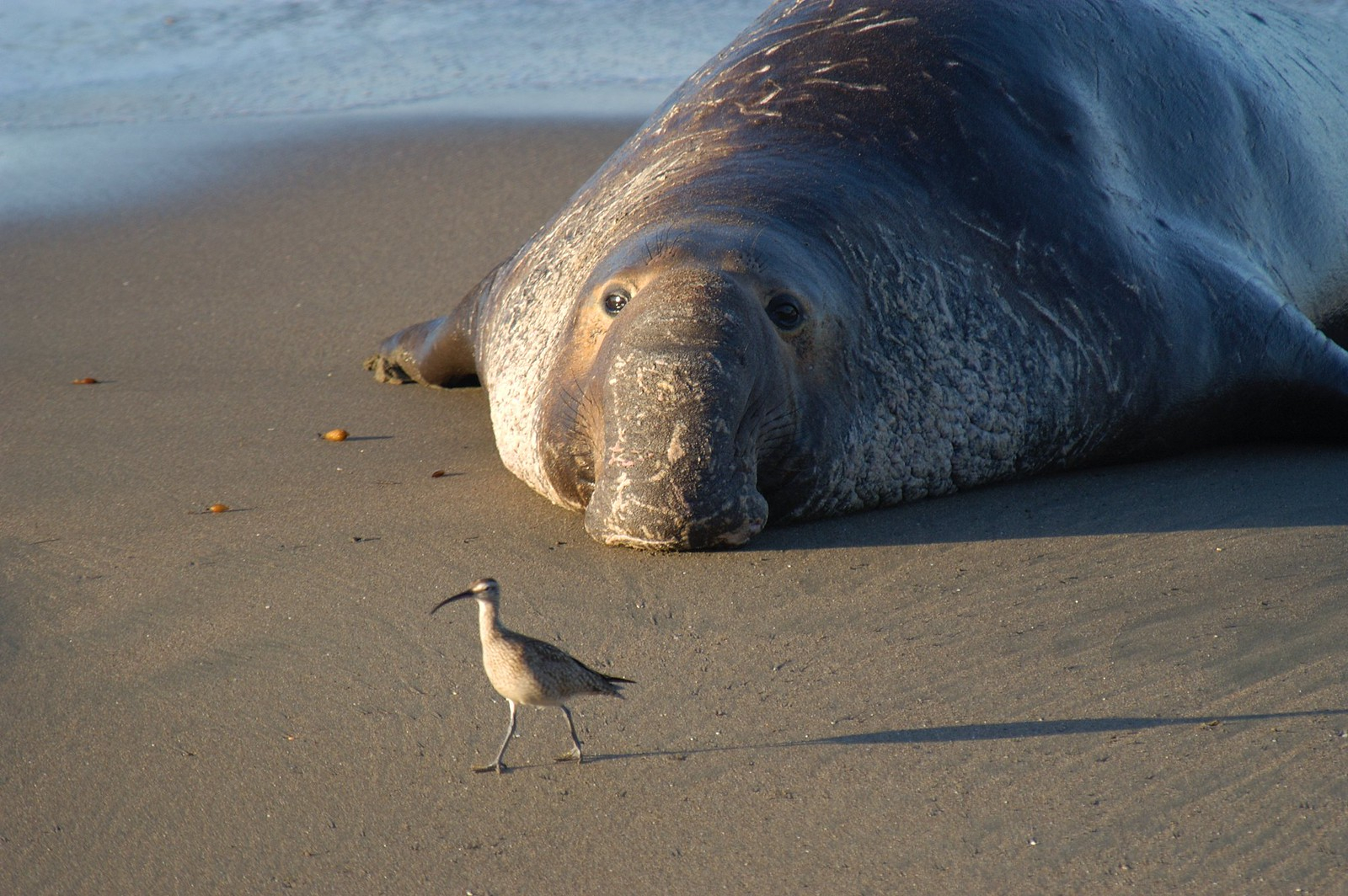This story was originally published by Undark and appears here as part of the Climate Desk collaboration.
So much about human social dynamics revolves around attaining, and then maintaining, power. And it isn’t just social dynamics in Homo sapiens. Power — the ability to direct, control, or influence the behaviour of others, as well as the ability to control access to resources — pervades every nook and cranny of the social life of virtually all animals: what they eat, where they eat, where they live, with whom they mate, how many offspring they produce, who they join forces with, and who they work to depose.
The quest for power in animals is so much richer, so much more nuanced, so much more wondrous than we once thought. It often involves overt aggression, but many times it entails the use of more strategic behaviours like assessments of potential opponents, spying, deception, manipulation, forming alliances, and building social networks, to name just a few.
The subtle, and often not so subtle, ways that animals seek power over those around them is astonishing and informative, both in and of itself, and for providing an evolutionary window through which we can better understand behavioural dynamics in group-living species.
— Lee Alan Dugatkin
Caroline Casey, who studies northern elephant seals (Mirounga angustirostris), likes to call their social system “a living soap opera.” Some data suggest that’s not hyperbole. Research conducted in the 1970s on one colony found that the probability that an elephant seal pup would survive to its first birthday was about 37 per cent, and it dropped to about 16 per cent for survival to age four. While other colonies likely had higher rates of survival, it’s still an especially hard-knock life for a male elephant seal. Should he be lucky enough to make it to age five or so, each breeding season he’ll engage in a never-ending series of contests with other males for mating opportunities. Odds are he will lose, as 95 per cent of all males will never sire a single pup, despite living a decade or more. On the slim chance, however, that a male emerges as one of a small handful of dominant individuals, the reproductive bounty is great.
Casey worked with Burney Le Boeuf, who has been investigating power in elephant seals for a very long time. He began in 1967, and from the start, the seals’ behaviour was not at all what the literature he was reading had led him to expect. At that time, research was dominated by studies of power that pitted two individual animals against each other in a lab setting. If the pairwise matchups involved enough different individuals, researchers would sometimes use mathematical techniques to reconstruct a presumed group dominance hierarchy. But when Le Boeuf saw elephant seals, he saw a fully functioning dominance hierarchy in nature. The wheels began spinning, and over 50 years later, even after his official retirement, he’s still studying power in elephant seals.
Año Nuevo State Park, just up the road from Santa Cruz, Calif., is home to the elephant seal rookery that Le Boeuf, his students, and his colleagues have been studying for the last five decades. For the first few years they worked there, the seals were living on one of the islands within Año Nuevo’s boundaries. Co-ordinating boat rides every time Le Boeuf wanted to watch the animals, which was just about every day, became a logistical nightmare. Then he caught a break. In the mid-1970s, with that island shrinking and the elephant seal population growing, a large number of the animals started a new colony on the park mainland, along stretches of coast abutting sand dunes. The dunes, which led to more inland wetland marshes and coastal vegetation, made a perfect home for the seals, and for Le Boeuf, it meant he could leave campus and be at his study site in 25 minutes.
Both male and female elephant seals spend months at sea, diving thousands of feet below the surface to feed on ratfish, dogfish, eels, rockfish, and squid, beefing up for their stints on the sand dunes, where they eat nothing at all. But the year plays out in a different manner for males and females. Each spring, females, who weigh about 1,500 pounds and are about 10 feet long, alight on the coast of Año Nuevo for their annual month-long molt, in which they shed their hair as well as the upper layer of their skin. Males also come ashore for a month to molt, but they do so in summer. During their molt, males look more like gentle-giant plush toys than power-hungry gladiators. They lie side by side, soaking up the sun, and act about as peaceful as any 13-foot-long, 4,000-pound animal might reasonably be expected to act.
December marks the start of the breeding season and the quest for power among those suddenly no-longer-gentle giants. The males come to the dunes at Año Nuevo first, about two to three weeks before females arrive. A free-for-all occurs then, as about 150 males, their giant trunk-like proboscises flopping in the air as they crawl along the beach on their bellies, work out a dominance hierarchy. The first stage in a contest between two males is an exchange of ritualized displays in which a male presents himself in an upright position and emits a call created, in part, by inflating his proboscis.
That call is unique in its combination of tempo and timbre. At the same time he calls, he’s slamming his body against the sand so violently that Le Boeuf says it feels like a truck is driving by: “The Earth kind of feels like it shudders a bit.” But no all-purpose information about the caller’s size or potential fighting ability per se is conveyed by these calls. When Caroline Casey taped the calls of larger and smaller males in one population and played them to males in another, she found that male behaviour did not change according to which calls they heard, as you might expect it would if the calls encoded bits of information on size or anything related to it. Instead, males remember the vocalizations of specific individuals they have interacted with. Those vocalizations act as a tag: a sort of name that can be linked to the actual behaviour of an opponent.

Seventy-five per cent of all elephant seal contests end with one male skulking away after these ritualized displays, cementing the power relations between that pair. If a contest continues, males charge each other while calling, repeating this over and over until they are so close to each other that when slamming their bodies down, they shoot sand up in the face of their opponent. If the contest is still not settled at that point, which happens only about 10 per cent of the time, violent biting, which can produce significant bleeding, follows. In the end, one male always leaves the loser. Each contestant then pairs off against another putative opponent, and the process goes on like this over and over for two to three weeks. Most power relations between males have been settled at that point, when females start to arrive.

Pregnancy in elephant seals lasts about eight months, but females don’t implant developing young into the uterine wall for three and a half months after an egg is fertilized, which keeps parturition (giving birth) on a neat yearly cycle. When females crawl onto the sand dunes for their four-to-six-week stay starting in mid- to late-December, they are within days of giving birth to a single pup, the product of the prior year’s mating.
When they arrive at Año Nuevo, they cluster in groups on the sand dunes: If they tried to go it alone, Le Boeuf says, they would be constantly harassed by males and would rarely be able to wean a pup successfully. The most powerful males, the winners of the umpteen battles that occurred before the females arrived on the beach, each guard one of these groups from other males.
Once a female in a group has given birth to and weaned a pup and is ready to mate again — about three or four weeks after having come ashore — the male guarding that group does everything he can to make sure he is the one to inseminate her before she heads back to sea. A stretch of beach might have 10 or more groups, each containing dozens of females, so the benefits of being one of those top-ranked males guarding a group are great.
By the height of the new mating season in late January, life on the coast of Año Nuevo is quite the spectacle. Though most females arrive just a few weeks after the males, new females are constantly coming ashore through mid-December and early January, so at any given time some females are pregnant, others have given birth and are nursing pups — who can gain 10 pounds in a single day — and still others have weaned their pups and are receptive to mating. The vast majority of the males who are not top-ranked and not guarding a group are constantly trying to make their way into one group or another to mate with any receptive females.
A male guarding a group sometimes staves off such attempts at usurping his power by calling loudly, which works when the usurper recognizes that male’s call. But fights sometimes occur if the two have never interacted before. As if all that chaos was not great enough, even this late into the breeding season, a new male occasionally comes ashore, and at that point, there will be a series of contests between the newcomer and the resident males to work out the newcomer’s position in the power structure.
Through all the tumult, consistent patterns emerge. Typically, the majority of matings on a stretch of the sand dunes go to just a handful of the most powerful males, with the largest harems. In one 1969 study, Le Boeuf and his co-author noted, just “four per cent of the males inseminated 85 per cent of the females.” Those percentages are impressive, but the absolute numbers are even more so. Top-ranked males guard groups with up to 100 females. Le Boeuf enjoys telling the story of a male that was at the top of the power structure for four years in a row, a rare event given the energetic demands of maintaining that rank year after year. He estimates that male mated with 250 females.
Whether it’s percentages or absolute numbers, one assumption when working with elephant seals is that matings translate into successful fertilizations. In most species, that assumption could, at least in principle, be tested by matching molecular genetic tests of paternity against observed matings. But in the mid- to late-19th century, northern elephant seals were hunted to the brink of extinction, perhaps down to a few dozen individuals, for their blubber. Even though modern populations have largely recovered from near-extinction numbers, the “genetic bottleneck” they went through means that their genetic diversity is very low — too low to allow paternity to be assigned by genetic testing. So Le Boeuf and his colleagues don’t know for certain that insemination always leads to fertilization, but they think the odds are good that it does.
Females are hardly passive players in all this drama. For try as he might, if the group that a powerful male is guarding is sufficiently large, he simply cannot stop all intruder males from entering. When an incursion is successful, the intruder will quickly attempt to mate with a female (and often many females) before he’s detected. Oftentimes, the females appear to want no part of such matings with lower-ranking males, and they make that abundantly clear to the intruder and, perhaps more importantly, to the male guarding their group.
As the intruder male goes through the typical motions of grasping the female and pinning her down to mate, she will swing her hips back and forth to dislodge him, and use her flippers to kick sand into his face, while emitting a piercing “croaking” sound that Le Boeuf suggests conveys “to everyone in the surrounding area … that a female is being mounted.”
The lower an intruder male is on the power totem pole, the more likely a female is to emit such a call. Upon hearing that call, the dominant male rushes over, dislodges the intruder, and chases him from the area, often following that up by mounting and mating with that female himself.
What of the mating success of these powerless, low-ranking individuals that make up most of the males on the beach? If incursions into a group of females typically fail because dominant males are on guard, and females pick up the slack should an intruder slip under the radar, what options remain? There’s only one: After a female has mated with a dominant male, she has to get to the sea, which can be anywhere between three and 50 metres from where her group is. On her way, she may be harassed by as many as 20 low-ranking males attempting to mate with her. “A female has to run this gauntlet of males in order to get to the water and go back to sea and forage,” as Le Boeuf tells it.
A female can mate after she has been inseminated by a dominant male, though she clearly tries to avoid doing so, as evidenced by the fact that she will use the most direct route possible to the sea and prefers leaving her group at high tide when the distance to the water is at its lowest. But usually that’s not enough, and one or more males will attempt to copulate with her. After living off body fat for a month, giving birth, and weaning a pup, a female may have lost 40 per cent of her body weight while at Año Nuevo, and her ability to fend off such attempted matings is low.
“It is a dangerous situation,” Le Boeuf notes, explaining that males bite females’ necks during copulation and may accidentally pierce the large veins that run down the females’ spines. If that happens, Le Boeuf says, “she is dead on the spot.” As a result, many times females do not aggressively resist such mating attempts and copulate with one of these males while en route to the water. What’s unclear, because the assigning of paternity through genetic analysis is impossible, is what proportion of these matings translate into fertilizations.
Once the females have made it back to sea, the males soon head out, too, and the sand dunes then house only weaned pups, who remain for another month or so before heading out to sea themselves. The following December, the whole cycle, including all the power machinations, begins anew. And, as ever, there will be nothing subtle about any of it.
Maybe the lesson to be taken
Maybe the lesson to be taken from that is that inbreeding isn't recommended.
I'm skeptical about animals' behaviour in "lab settings."
Sounds like researching male human behaviour by locking'em in jail.





Comments